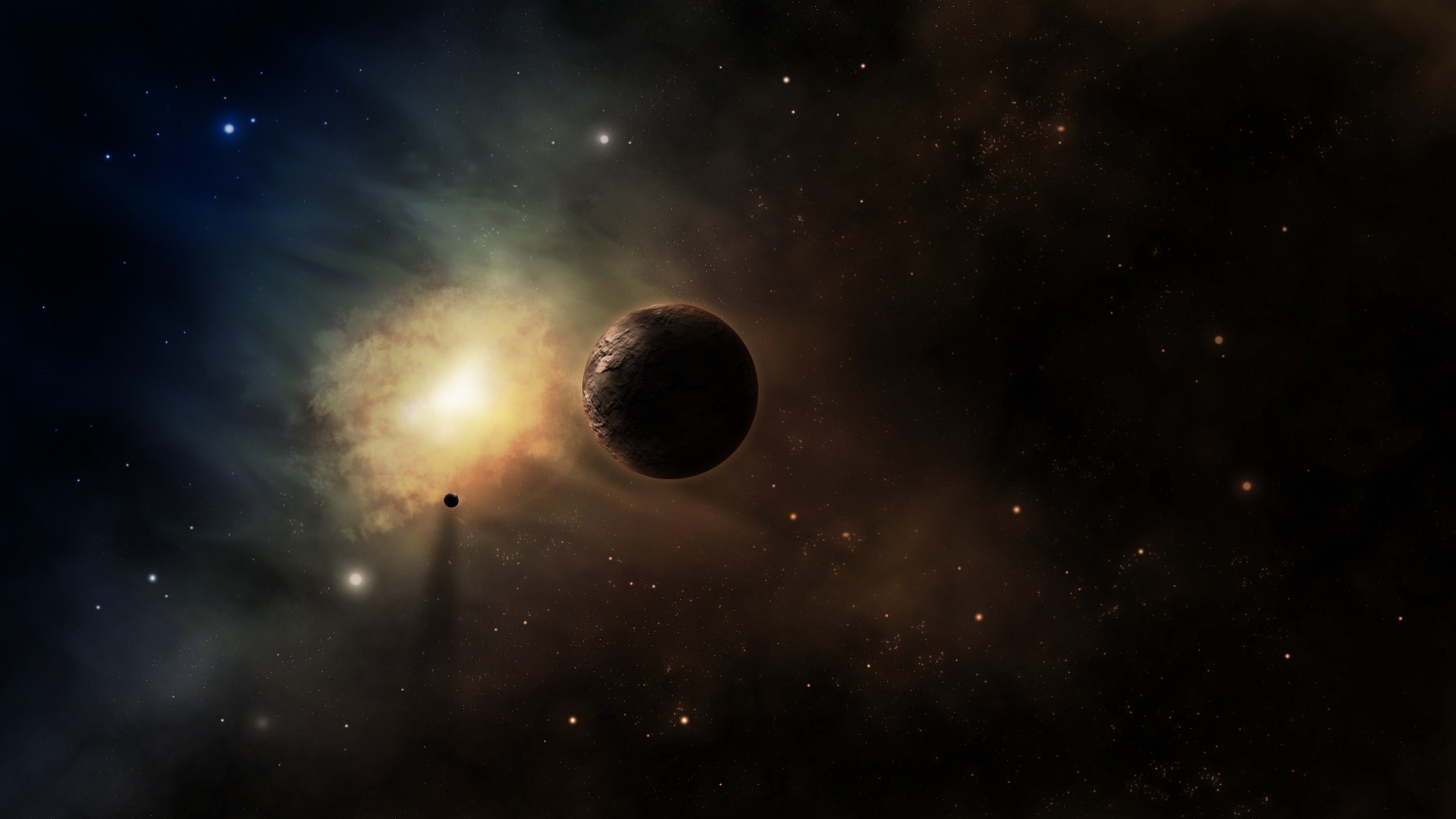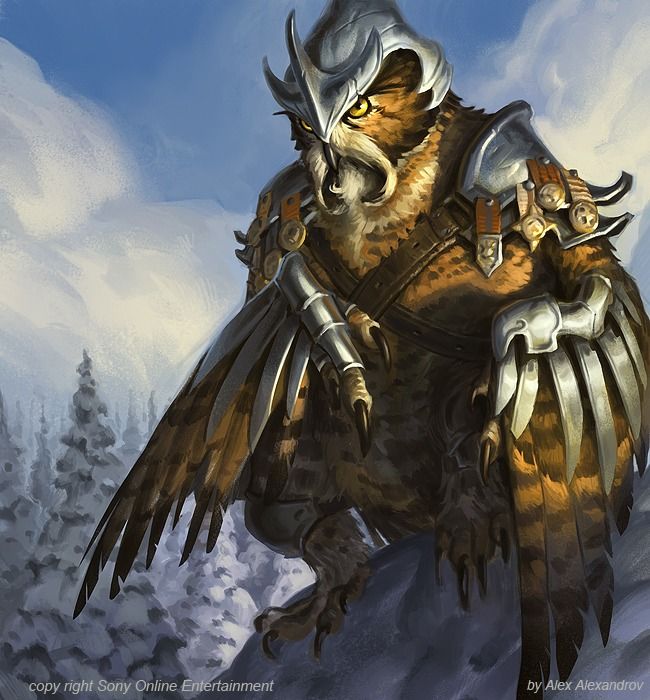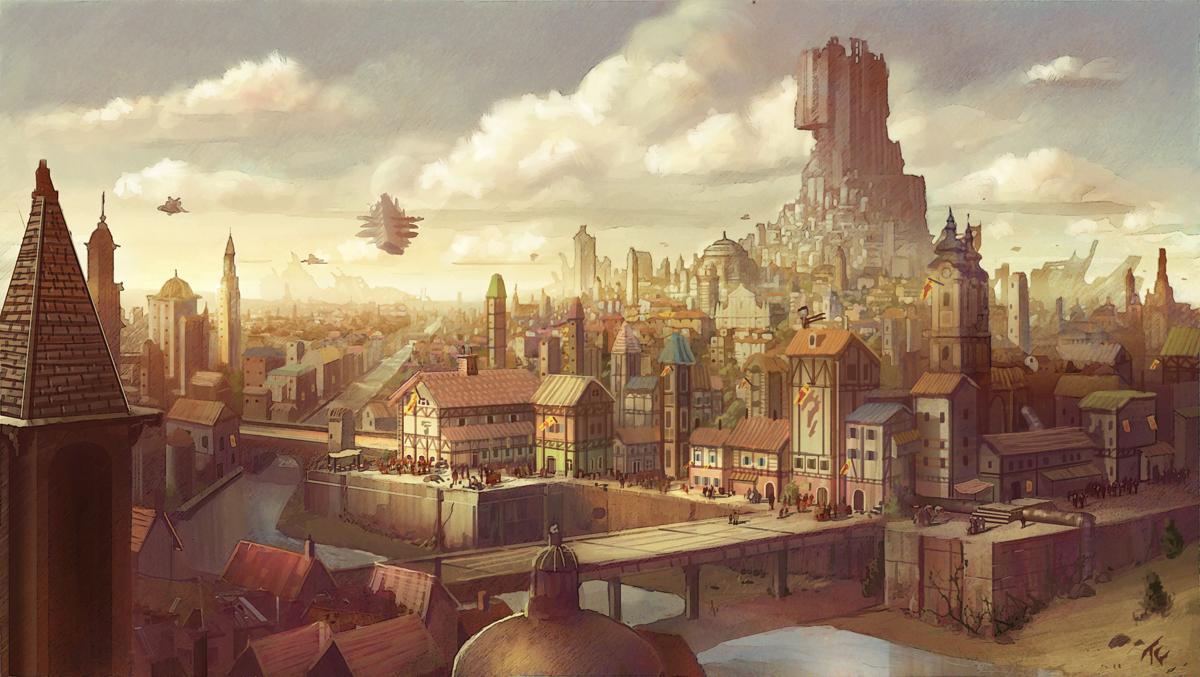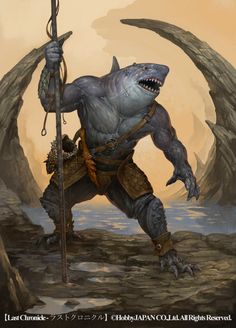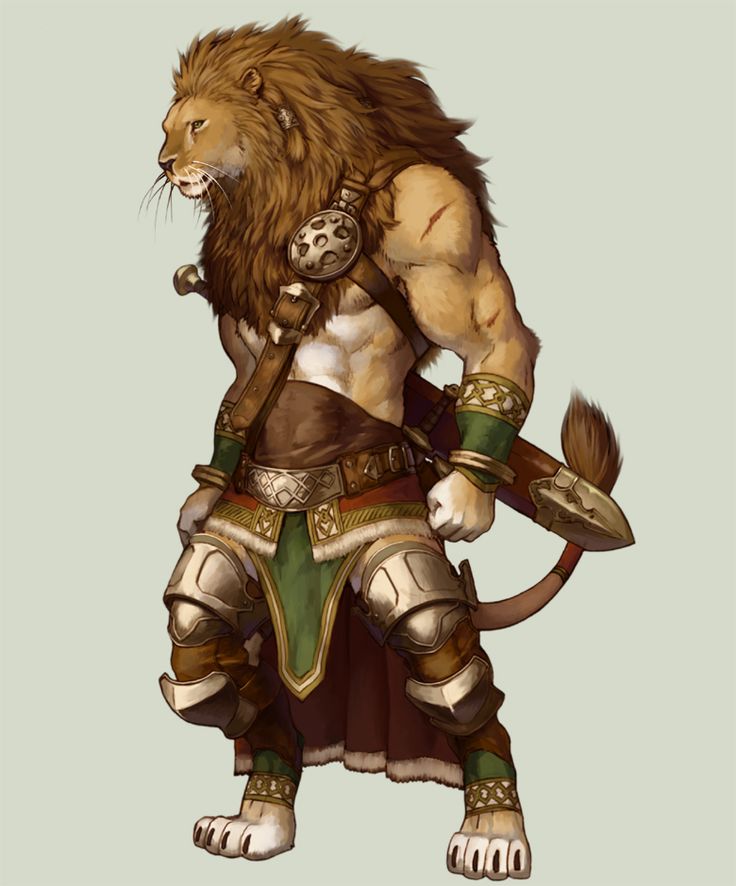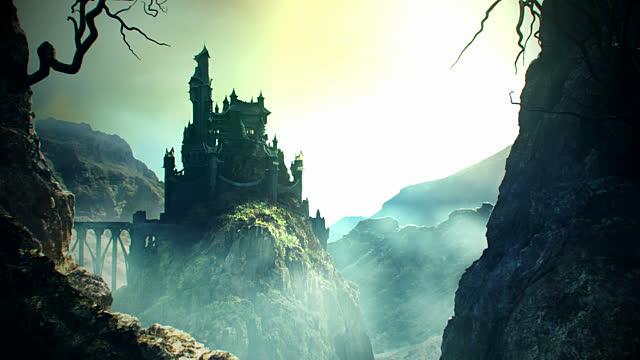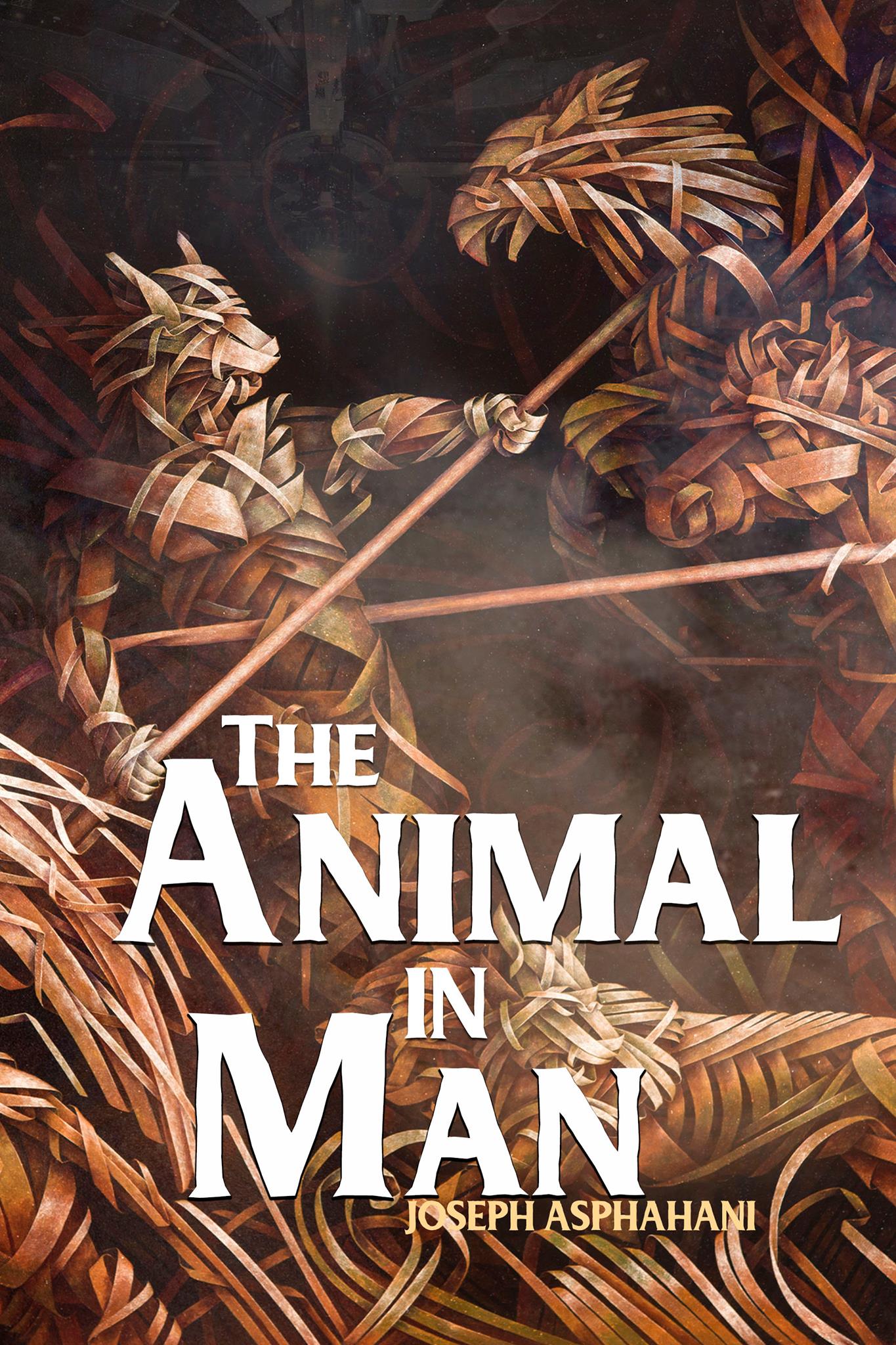Happy February! This month, you can look forward to more great posts from our contributors — the focus in these posts: Fantasy, the making of a story that will live through the ages.
But there’s more! World Builders resumes — today!
And not just World Builders, this is World Builders 2.0, the bigger, better reincarnation of the popular World Builders series that ran from August – December last year.
Stay tuned every Monday and Friday for a D&D-style tour of new and exciting fantasy worlds from some excellent fantasy authors. (Click here to view the schedule.)
Today, to kick it all off, we enter the world of Joseph Asphahani, author of The Animal in Man.
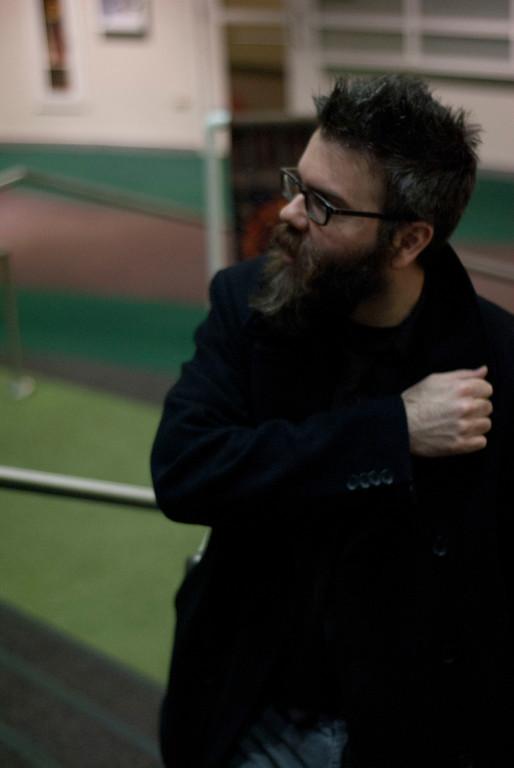 Life-long gamer and talented, creative writer. Graduate of Full Sail University, Creative Writing Master of Fine Arts. Six-year veteran teacher from Chicago Public Schools. Joseph Asphahani is many things, and he looks forward to adding published fantasy/sci-fi author to his growing list of identities with his upcoming first novel “The Animal in Man” via Inkshares publishing. When he’s not lost in the creation of his own worlds, he works as a content marketing writer in the corporate one.
Life-long gamer and talented, creative writer. Graduate of Full Sail University, Creative Writing Master of Fine Arts. Six-year veteran teacher from Chicago Public Schools. Joseph Asphahani is many things, and he looks forward to adding published fantasy/sci-fi author to his growing list of identities with his upcoming first novel “The Animal in Man” via Inkshares publishing. When he’s not lost in the creation of his own worlds, he works as a content marketing writer in the corporate one.
Now, prepare yourself to enter Herbridia!
Geography and Nature: the big picture
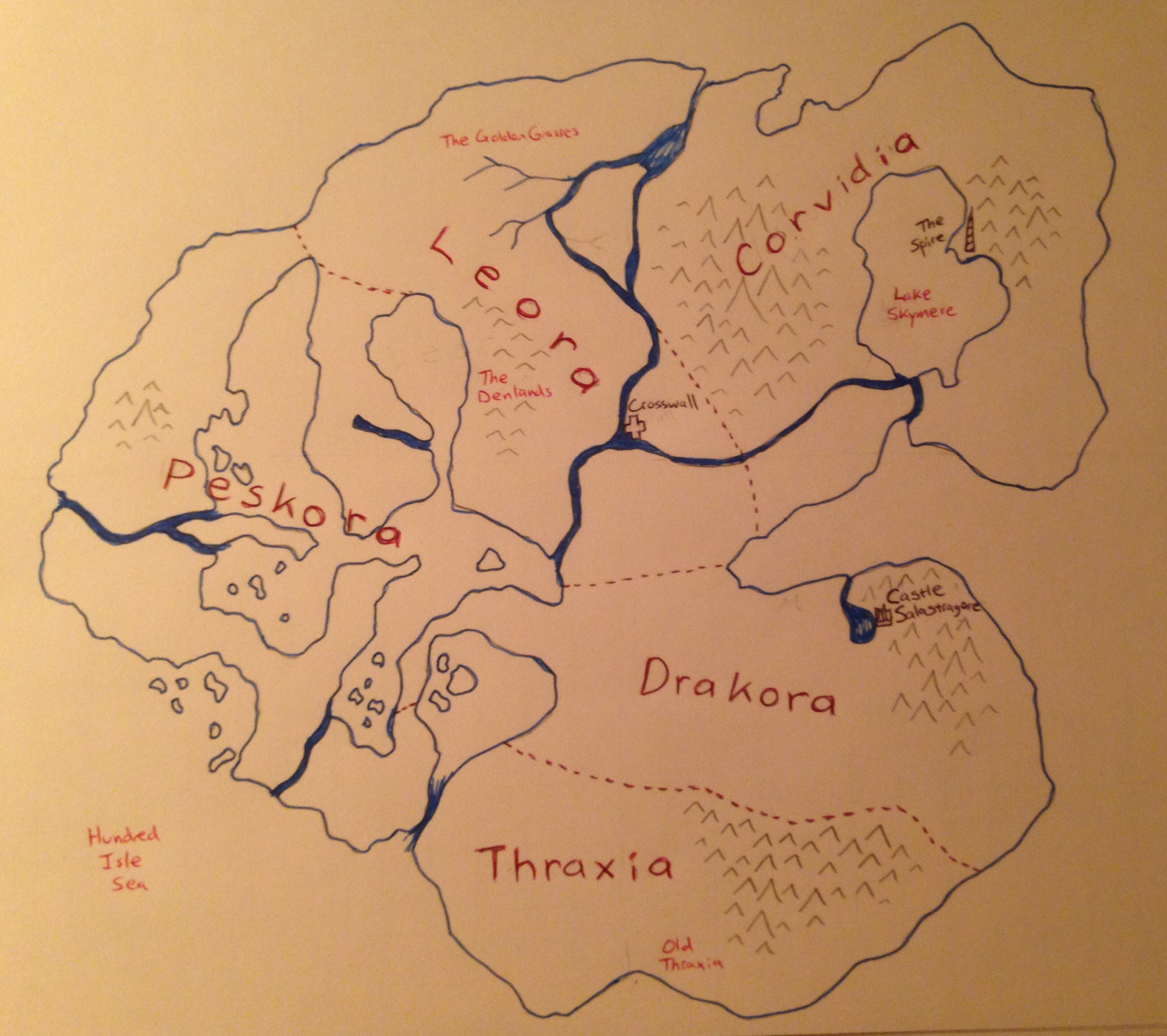 Overall geography: The lands and waters of the planet Herbridia are modeled after what one might expect to see on the planet Earth. There are towering mountain ranges, low fertile valleys cut by wide rivers that flow lazily across some spaces and rage rapidly at other points. There are deep oceans, shimmering beaches, and barren deserts where only the hardiest creatures survive. There are tropical jungles and shadowy forest groves, and yet not so far away there are endless sweeping veldt-like plains of gold grass. Despite all this variety, the planet itself is not so massive. It is almost as if someone designed a world and wanted to design it to offer every possible geographic feature under the sun.
Overall geography: The lands and waters of the planet Herbridia are modeled after what one might expect to see on the planet Earth. There are towering mountain ranges, low fertile valleys cut by wide rivers that flow lazily across some spaces and rage rapidly at other points. There are deep oceans, shimmering beaches, and barren deserts where only the hardiest creatures survive. There are tropical jungles and shadowy forest groves, and yet not so far away there are endless sweeping veldt-like plains of gold grass. Despite all this variety, the planet itself is not so massive. It is almost as if someone designed a world and wanted to design it to offer every possible geographic feature under the sun.
Special features that makes your world unique, exotic, or strange:
Despite the close proximity of all its various geographic features, the weather and climate is oddly uniform across the whole of Herbridia. Whether you’re standing on a mountain peak or in a sunken desert crater, the temperature will only vary by a few degrees. When the seasons change – from winter to spring, summer to autumn, and back again – the entire planet feels the difference.
The skies over Herbridia are critical to understanding this unique world. The celestial bodies that dominate the horizon, night or day, play a major part in Herbridians’ concept of their origin and their place in the universe. Yinna is the day-star that gives this small planet its light and warmth. Its plants grow only because of her blessing, and many believe her heat alone is what keeps the blood coursing through Herbridian veins.
Her twin sister, Yerda, is Herbridia’s massive moon, floating far beyond reach, surrounded by an asteroid belt, and pitted by a massive crater that reaches nearly to her core known as “Yerda’s wound.” From time to time, the stray meteorites of Yerda’s belt that are large enough to survive entry through the Herbridian atmosphere rain down in storms of fire. Even more immediately observable than these two heavenly bodies is the colossal floating object the Herbridian people call “The Aigaion.” It wanders the world’s sky aimlessly, drifting along no observable pattern across cities and mountains and seas. So massive is this city-sized structure, that no matter where one stands on the small world below it, he or she can see The Aigaion’s trail at least once a day, whether just above the horizon, or directly overhead. Some, especially Corvidians, have tried (and failed) to reach its heights. In fact, a new religion has arisen within that nation, promising its believers the ultimate path to ascension to this inexplicable object that has become the focal point of their belief in the afterlife.
Special features that make your world familiar:
Despite the fact that all of Herbridia’s sentient creatures are animal-human hybrids, it’s very important to recognize that there are still hundreds of fauna that inhabit the world alongside them. There are pesky mosquitoes, bees, flies, spiders. There are cattle and livestock and beasts of burden. There are abundant fresh water fish in the rivers. There are small lizards and frogs, and in the oceans arguably one can find the most diverse population of brightly colored life of all – enormous coral reefs brimming with millions of unclassified life. The walking, talking animal-people of Herbridia rely on this wide variety of untamed fauna to keep the cycle of life spinning, just as it is on the planet Earth. This protein-rich diet is also, of course, supplemented with a variety of flora just like the Earth enjoys. Varieties of lettuce, spinach, root vegetables, and copious amounts of vine- or orchard-grown fruits are cultivated, harvested, and carted to market throughout the year as well.
Magic and how it is defined in your world:
Manipulation of nature’s forces, as it’s told in Herbridian legends and fairy tales, is simply not a reality any more. However, the stories told nowadays are based only on vague and hazy memories. Some of the oldest Herbridian species talk of how at one point everyone, no matter how big or small, could manipulate space, and air, and energy. How some very powerful sorcerers could even invade the thoughts of others or use their bodies as puppets. But these arts were lost, these old folk say, in the “Great Forgetting” twenty years ago (by some accounts sooner, by others later, but by most the event is called “The Awakening”). All memories before that time were erased. If a Herbridian had indeed been a powerful sorcerer the day before The Awakening, then he or she would certainly have found their claws useless at manipulating forces when they regained themselves within the weeks following the event. All that remains of ‘magic’ in Herbridia is that phantom sense that something – some ability – is missing. It’s a lost collective memory of which no one speaks openly. And yet there are some who have not forgotten, by their potent forces of will they remember, and they have begun to recover these lost arts. It is rumored that the leadership of The Mind – an organization sworn to the ‘betterment of all Herbridians’ since The Awakening (though some would say cult) – are sole remaining practitioners of these manipulative abilities, and that they secretly search every corner of the small planet to find and train others who have not forgotten the gift.
Races and cultures: your world and its people
Races or dominant species:
There are hundreds of different types of creatures that inhabit Herbridia, but there are only two important classifications to remember when separating them. The first is considering which Kingdom to which a Herbridian belongs: Corvidians are bird-men, Leorans are mammal-men, Drakorans are reptile-men, Peskorans are fish-men, and Thraxians are insect-men. The term ‘men’ is used (though there are, of course, females in equal abundance) rather than ‘people’ because every Herbridian is a hybrid creature, equal parts human and animal. The second consideration is species. The Leoran kingdom boasts the greatest species variety, as they are geographically defined: the beavers, bears, deer, foxes, wolves, and other forest-dwellers stick to the Denlands, while the rhinos, hyenas, cheetahs, lions, and wildebeests naturally roam the golden plains. And in the south of Leora, bordering closely with the Drakoran swamps, gorillas, panthers, tigers, monkeys, and more stalk the jungle lands. Corvidian species are very limited to birds of prey such as owls, hawks, eagles, falcons, though one can find crows, robins, and even a parrot or two (who usually play the ambassador roles to the tropical Peskoran lands). Peskorans are likewise not so diverse, though one can find crabs, octopi, squids, sharks, dolphins, orcas, and some smaller-framed fish people populating their coastal cities or island temples. The few Drakoran species that remain after the Thraxian wars took a heavy toll on their nation’s population comprise both amphibians and reptiles, and include frogs, turtles, lizards, snakes, crocodiles and aligators, and more. The Thraxian species, although supposedly now completely eradicated from the face of the planet, were once made up of primarily ant colonies, with drones and workers controlled en masse by the telepathic signals of their queen, though there were (are?) secondary species such as scorpions, spiders, and beetles.
Features of races or species that make your world different from our own:
The animal-people of Herbridia enjoy whatever advantages one might expect, whether its strength or agility, fur insulation, heightened awareness via acute vision or hearing or smell, increased lung capacity for diving… the list goes on and on. Every Herbridian species benefits from some unique advantage in this world. Some gain an edge in combat, some in stealth, some in just ordinary life. (Beaver-men make excellent builders, as it turns out, and Turtle-men live long enough to learn much.) Much of what Herbridian species can do naturally has in turn naturally shaped these Herbridian species’ cultures, making them distinct from one another in many ways.
Features of races or species that make your world familiar:
Despite all their physical differences, every Herbridian at his or her core is human – they experience the same human emotions we do, they have unspoken standards of decent behaviors they follow, they fashion laws and fitting punishments if they’re broken. The atmosphere of this world is familiar insofar as, above all, Herbridians have made a society to regulate all aspects of how they live and interact. Although it is an extremely young society. Before The Awakening, the entire history of Herbridia (the history that’s only recalled in the hazy memories of a few) is nothing but bloodshed and war.
How animals and fauna relate to the sentient species of your world:
Despite the fact that all of Herbridia’s sentient creatures are animal-human hybrids, it’s very important to recognize that there are still hundreds of fauna that inhabit the world alongside them. There are pesky mosquitoes, bees, flies, spiders. There are cattle and livestock and beasts of burden. There are small lizards and frogs, and in the oceans arguably one can find the most diverse population of brightly colored life of all enormous coral reefs brimming with millions of unclassified life. The walking, talking animal-people of Herbridia rely on this wide variety of untamed fauna to keep the cycle of life spinning, just as it is on the planet Earth.
Dominant cultures:
Although all five (now, perhaps only four) of the Kingdoms have their own culture and customs that define them, the Leoran capital city of Crosswall is the massive melting pot where these all blend together. It’s not just a place on the Herbridian map, the city itself has become the legend on the map itself by which everything in this world is measured. All goods, all species, all gossip, games, stories, all life mingles and blends in Crosswall. It’s the centerpiece around which this new Herbridian way of life is being constructed in the aftermath of The Great Awakening. Because Crosswall is the seat of the Leoran monarchy (which itself is as young as the whole of Herbridian society), it is arguable that within the next several decades, the Leoran way of life will come to influence all other Kingdoms in Herbridia.
Cultural expressions that are quite different from our own:
It might seem like a lazy answer, but the following is by design, it is completely intentional by the designer. There really are no expressions that are unique to Herbridia. The reason, perhaps, is because everything there is still in its infancy. The collective subconscious can only recall their lives in this world for the past twenty years, remembering nothing before The Awakening. Frankly speaking, Herbridians have not had time to come up with anything unique. If anything, some of the more erudite groups – such as The Mind – has instead turned their attention backwards in time to question where all of their practices, language, and social constructs came from. Before The Awakening, Herbrian culture was based on violence. Everything was conflict. The Kingdoms fought one another in endless campaigns, and even within these kingdoms, the sports played among species often involved bloodshed and death. The cultural expressions that were at those times uniquely Herbridian are the very things that The Mind and arguably most of Herbridian society are trying to get away from… though of course, some still cling to the glory days of the past, so pervasive was the violence they committed that it’s left an imprint in their very souls.
Cultural expressions that are familiar from our own history:
Herbridians enjoy games. They enjoy competition. No matter which nation one hails from or which nation one visits, he or she can always find some game to play. And Herbridians like to play for stakes. The wager is a way of life for many. Diversions and escape from the everyday toils of work and duty in this world are sought as often as possible. Before The Awakening, the natural outlet of this tendency was war. Whole nations would pit themselves against their enemies, wagering the fate of entire territories and countless lives. Nowadays, as society struggles to build itself up, new games have been designed and distributed throughout the lands. Many of which are eerily similar to what people in our world – the planet Earth – enjoy. There are games of card sets, dice, numerical stone chips, and even a battlefield recreated on an 8 by 8 tiled board.
Politics and origin: how the world is knit together
What are some of your major nations?
There are five nations, each controlled by its own primary classification of animal (or ‘kingdom,’ though when speaking politically it’s important not to equate that term to monarchy). The people of each nation are governed by a political system unique to that nation alone: Leorans are ruled by a recently-established monarchy. Drakorans by the decisions of a council of lords. Peskorans probably have the weakest centralized government, which is probably best described as a ‘lazy democracy,’ which has worked well enough for them since their population is as spread out as much as the world’s waterways. Corvidians are on the other side of that spectrum, however, relying on an archaic and often dysfunctional House-system of nobility. Thraxians, in the time when they skittered about their nation in vast numbers, were enslaved to their queen mothers, as in a completely dominant dictatorship.
How do different nations or territories interact? Are there outstanding disputes? If there is unity, how is it maintained?
The city of Crosswall is more than just the seat of the Leoran king’s power, it is also the
centre of trade and diplomacy for all the four remaining nations. Before The Awakening, all of the kingdoms ruled their own nations according to their own unique system, and the only interaction they really ever had with the others took place on the battlefield or in skirmishes. Since The Awakening, however, the individual rule of law passed down from a governing body to its own nation has mattered little, as everything now flows through Crosswall, and thus Leora, in some form or another, Leora itself has become a very
dominant nation. For the time being, peace is maintained between the four remaining nations. The Corvidians still consider themselves and their ways of life better than everyone else, so they turn their beaks up at the notion of allowing outside culture to spill into their own lands. They have no qualms about mingling cultures so long as the mingling is maintained in far away Crosswall. The dwindling Drakoran population needs all the help it can get to maintain its numbers and, perhaps, over the next century reproduce the numbers it lost in the initial Thraxian assaults. In the meantime, the remaining Drakoran Lords are making a fortune in the medicinal trade, since their fertile swamplands are the only place on Herbridia where certain alchemical ingredients grow. Peskorans, well, Peskorans don’t really care. If you have goods to move, into or out of Crosswall, up or down a river or a coastline, and so long as you pay, the Peskoran traders will get it there. The only nation, ironically, who does not currently enjoy nationwide peace is Leora. The new king seized the opportunity to conquer and unite the nation’s disparate tribes under his banner following the Thraxian Extermination wars, and has ruled the sprawling and vast nation ever since. But there are still pockets of resistance to his monarchy springing up across the nation, especially beneath the forested canopies of the Denlands. The Leoran King spends the majority of the recent Herbridian calendar away on these campaigns, to quell this slippery rebellion once and for all. In his stead, he has appointed a handful of representatives from The Mind to draft and enact the policies of Crosswall, his seat of power, and the Leoran Kingdom at large. If there is any one organization that unites all four remaining nations under one standard code of ethics, law, custom, and economy, then arguably it is The Mind. Their influence is at its height in the city of Crosswall, but it is spreading steadily to the other four nations as well.
How does the world economy work?
Luckily or unluckily, the raw necessities and essential resources of life are fairly evenly distributed among the five nations’ lands (except, perhaps, for the Thraxian deserts that lie in waste after the Extermination Wars). The swamplands of Drakora are plentiful with exotic fruits and medicinal herbs. The rolling plains of Leora are fertile for raising crops all year long, and its tall forests is an abundant source of hardened timber. The mountains of Corvidia provide the world’s most solid stone and strongest metals. And the beaches and coasts of Peskora provide the bounties of the sea, captured, stripped, and shipped non-stop along Herbridia’s waterways all year long.
What is the overall history on which the present world is built?
The present history of Herbridia is easily summarized: Five brothers have squabbled all their lives, and as they come into their responsible and mature age, they must set aside their differences and learn how to live peacefully. Or not.
What time period from our own history would you say is most like the time period in your story?
Certainly the medieval ages of our world. Herbridian might is still distributed through the sword and shield, or bow and arrow, and the true power that the worlds’ rulers wield is bought only by the number of soldiers that carry them. But… unbeknownst to the greater population of this world, there are certain scientific and mechanical breakthroughs that are being researched, prototyped, tested, and reiterated which might change the course of history forever.
Regarding the current state of the world as the story begins:
While many, especially The Mind, view The Awakening as a wonderful opportunity in Herbridian history to begin anew and build a better, lasting society based on ethics, trade, and law, as opposed to the centuries-long history of violence before this event, the unforeseen outbreak of some inexplicable affliction called The Stray threatens to derail the upward momentum of the world’s society. The first decade following The Awakening was a prosperous time for the advancement of all Herbridia under the careful guidance of The Mind, but soon after, the first case of beastial practices were reported, becoming more and more common place as time wore on. On one hand, all the training, cultivation, and education of the individual that The Mind hopes to distribute make Herbridians more ‘human,’ but on the other hand, The Stray drags those who fall under its influence into a wild, feral, frenzied, beastial, and even cannibalistic nature. The Stray are ‘animals.’ Essentially, a Stray Herbridian loses his mind, loses the ability to speak, to reason. He loses his ability to live peaceably with neighbors, friends, and even his own family. The transformation from upright Herbridian to skulking beast is gradual. It starts with a kind of slurring of language, an unchecked instinct to show one’s claws or bare one’s fangs when agitated. Then one forgoes washing, forgoes clothing. By the time a Herbridian has become fully Stray, they no longer resemble anyone who can function in society. The stray affliction has stricken all the nations of Herbridia, but none more so than Leora and the city of Crosswall itself. The disease has spread so rampantly, that the King has ordered the entire Western district of his cross-shaped capital be made into a walled quarantine zone to contain the affliction and protect his people. This district has fallen into disrepair and neglect, and while it’s true that there are roaming packs of Stray who stalk their prey within its crumbling corridors or along its broken cobblestone streets, many are wrongly accused of bearing the disease and wrongfully thrust into this place.
People and groups: social organization in your world
Is there a dominant society or group?
Leoran culture is the dominant culture, and The Mind is the dominant group, though this has been answered elsewhere.
Tell us about organizations or major hierarchies:
There are two organizations in the world of Herbridia that have steered the course of its history.
The first one of note is called The Mind, and it is a relatively young faction that seized the opportunity to reorient the interactions between the nations very soon after The Awakening left everyone in a cloud of confusion. The Mind saw its opportunity to gain control of a bewildered population that might otherwise kill itself, and so provided the diversions, laws, and education it thought the world needed to live peacefully. So far it has worked, and The Mind grows in power and influence every day. Every day it recruits more initiates, so much in fact that the Peskoran dye-makers guild has sent expeditions across the seas in hopes of finding a new source of alchemical colors for The Mind’s lowest ranking green robes.
The other organization, by stark contrast, is far older, far less influential (these days), and exists entirely in the shadows. They are The Monitors. Herbridia is a world of secrets. Some buried. Some kept out of reach. And many that could undo everything. Whereas The Mind searches for ways to uncover these mysteries, solve the riddles of the natural world, and harness their discoveries for what they believe is the greater good, the Monitors have a long memory of the dangers such knowledge can pose. They were never more than one hundred in number, for centuries, and yet they managed to infiltrate every echelon of Herbridian hierarchical power structures and steer events so the world’s entire way of life revolved around endless war. And in doing so, The Monitors would ever guide massive armies away from stumbling upon the secrets they had sworn to keep hidden. Just before The Awakening, something happened in their ranks. Some disagreement. Some rebellion. Some kind of hunt and slaughter until now only a few original Monitors yet survive, scattered. No one knows how the self-destruction of the Monitors actually gave rise to The Mind. Regardless, The Monitors’ watch has ended. Although Herbridia’s secrets now lie unprotected and unconcealed, the last remaining leader of this secretive guild seeks to harness the power of this world’s powerful weaponry against what he considers its true enemy. He does not need the Monitors, and he is beyond the reach and growing influence of The Mind.
Want to know more about Joseph’s world? Why not enter it by pre-ordering a copy of his book, The Animal in Man — the official winner of Inkshares’ Sword & Laser Contest #2:
An artifact of immense power puts Maxan in the middle of a secret war between mighty guilds. To overcome the resourceful and sinister masters who would use him, use everyone, as puppets, he must decide which nature defines him. Animal, or man?
“Intrigue, action, and furry creatures as the characters! I love This book has great potential and I can’t wait to see how it all turns out. Maybe I’ll go read some Plato for spoilers!”
— David Barrett, Nerdist Contest winning author of It’s All Fun and Games
Buy the book!
EBOOK: Inkshares
PRINT BOOK: Inkshares
Connect with Joseph on Twitter: @BulletTime000

